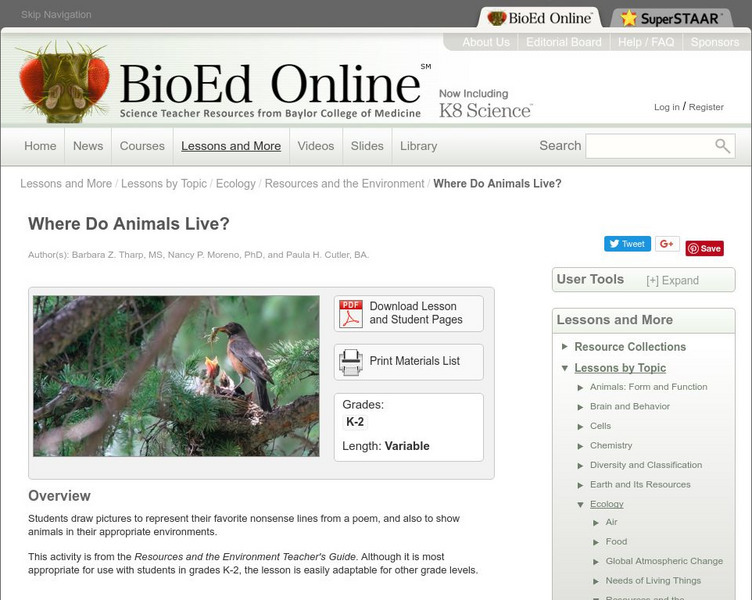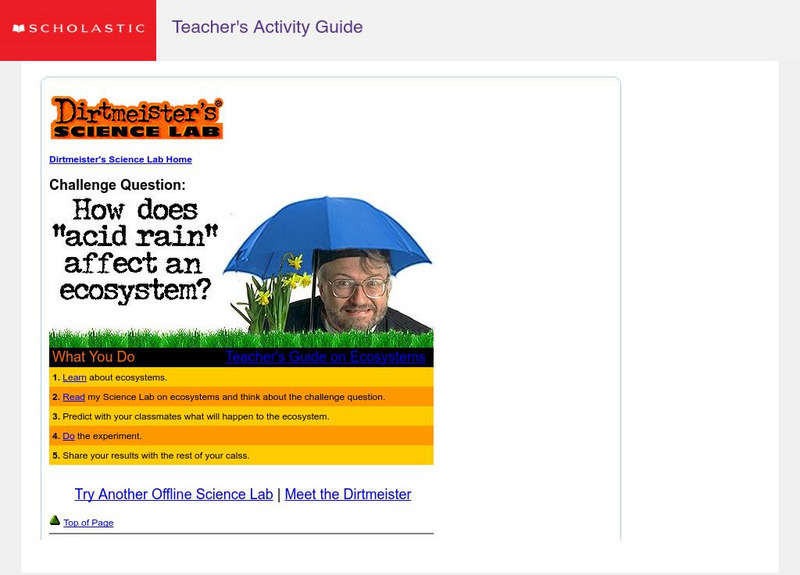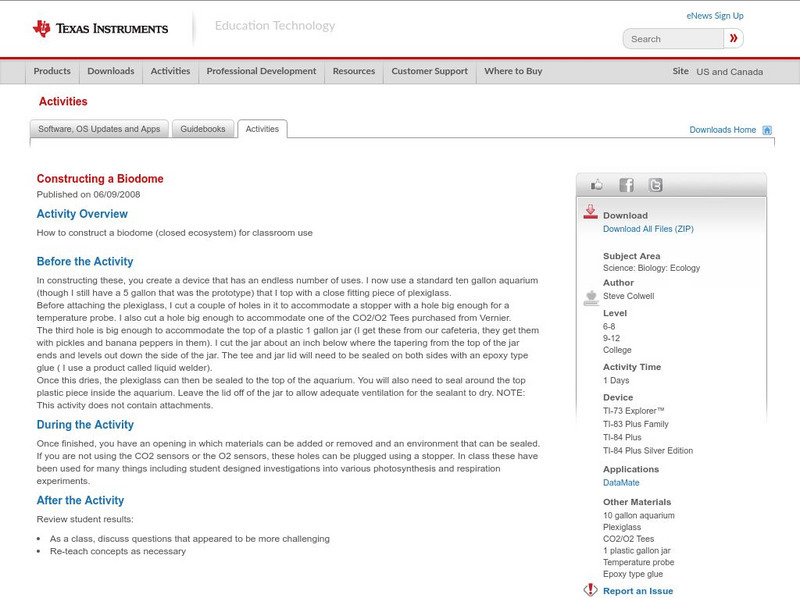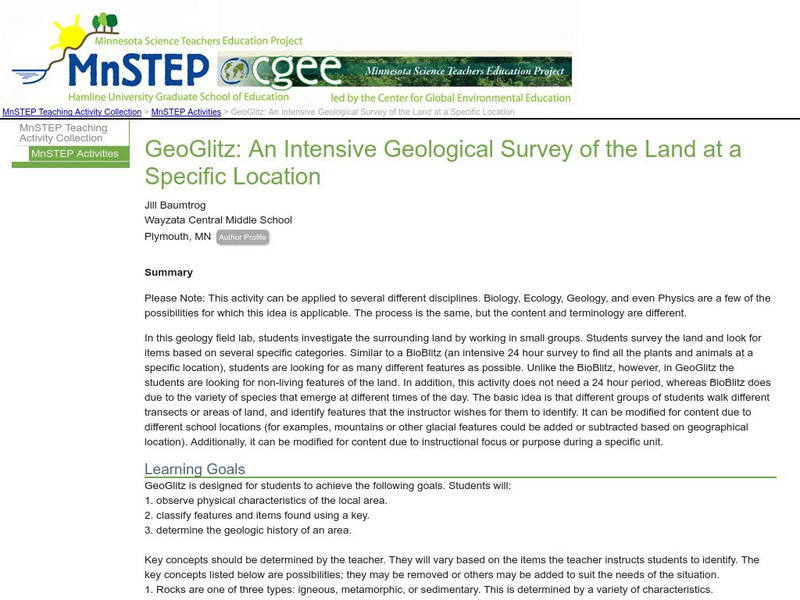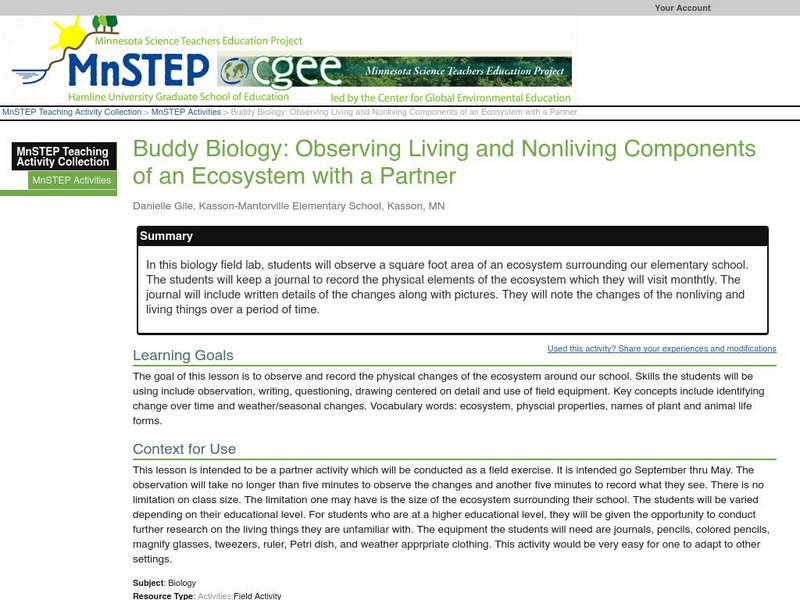Utah Education Network
Uen: Trb 4:5 Investigation 1 Wetlands, Forests & Deserts
Learn about surface terrain and how plants and animals are affected by the temperatures and precipitation.
PBS
Pbs Learning Media: Biomes
This interactive resource adapted from NASA describes the different temperature, precipitation, and vegetation patterns in seven biomes: coniferous forest, temperate deciduous forest, desert, grassland, rainforest, shrubland, and tundra.
BioEd Online
Bio Ed Online: Where Do Animals Live?
In this lesson plan students listen and participate by filling in missing words as the teacher reads a silly poem about places where animals might live. Students are required to draw pictures representing both their favorite nonsense...
Utah Education Network
Uen: Introduction to Habitat Alteration
Introduction to the concepts of habitat and habitat change.
PBS
Pbs: River Rewilding: Grand River Restoration and Revitalization Project
A unit for learners to look at the economic opportunities associated with a river. Students will explore the Grand River Revitalization & Restoration Project. In this unit, they will also learn about two species impacted by the...
Utah Education Network
Uen: Themepark: Home/habitat: Habitat
Find a large collection of internet resources organized around habitats. Links to places to go, people to see, things to do, teacher resources, and bibliographies.
Utah Education Network
Uen: Themepark: Systems: Ecosystem
Find a large collection of internet resources organized around ecosystems. Links to places to go, people to see, things to do, teacher resources, and bibliographies.
PBS
Pbs: River Rewilding: Evaluating Impacts on Ecosystems and Communities
A units that follow a community as they work through Grand River Revitalization Efforts. Investigate how these efforts impacts the social, economic, historic, and biology of the Grand River.
BSCS Science Learning
Bscs: Restoring Ea Middle School Science Unit
Restoring Ea is a place-based middle school science unit exploring management strategies that could be used for the Loko ea fishpond to sustainably feed people and ensure the ecosystem is healthy and pono (balanced). While specifically...
Houghton Mifflin Harcourt
Harcourt: School Publishers: Exploring Ecosystems
Compare and contrast three very different ecosystems - the Sonoran Desert in Arizona, the Florida Everglades, and the Arctic Coastal Plain in Alaska. Learn what makes each of them unique, and about the adaptations plants and animals had...
McGraw Hill
Glencoe: Biology: Dynamics of Ecosystems
Find out what you know about the dynamics of ecosystems by taking this post test.
McGraw Hill
Glencoe: Biology:dynamics of Ecosystems
See what you know about the dynamics of ecosystems by taking this interactive pretest.
E-learning for Kids
E Learning for Kids: Science: Mexico: What Is a Habitat?
Sofia came back from a trip around the world. She noticed how each animal she saw belonged to a certain habitat. Help her learn about animal habitats and the species that live there.
E-learning for Kids
E Learning for Kids: Science: Pacific Ocean: What Can We Find on a Beach?
Josephine lives on the Marshall Islands. Follow her to the beach and find out what kinds of plants and animals live there.
E-learning for Kids
E Learning for Kids: Science: Caribbean Sea: Pirates: What Are Some Common Habitats?
Pete is shipwrecked and exploring environments around him. Want to join him as he learns about plant and animal habitats?
Scholastic
Scholastic: Dirtmeister's Science Lab: Acid Rain
Step into Dirtmeister's Science Lab as he sets out to answer the challenge question: "How does acid rain affect an ecosystem?" Learn about ecosystems, make your predictions and then do the experiment.
Texas Instruments
Texas Instruments: Glencoe Middle School Science: Biodiversity and Ecosystems
Students will conduct a field investigation to learn about the environment. They will observe biotic and abiotic factors of an ecosystem. Students can use the CBL 2 and a temperature probe to collect data and a graphing calculator to...
Texas Instruments
Texas Instruments: Constructing a Biodome
How to construct a biodome (closed ecosystem) for classroom use.
Next.cc
Next: Biomes
Multiple activities help students gain a better understanding of land and water biomes.
Science Education Resource Center at Carleton College
Serc: Interdependence of Life: How an Ecosystem Responds to Change
In this biology field investigation, learners will investigate the site of an environmental disturbance, identify plant and animal life within that specific area, and compare it to an adjoining forested area. Students will map both areas...
Science Education Resource Center at Carleton College
Serc: Discovering Nature in Our Neighborhood: Investigating Natural Communities
Students examine the natural surroundings around the school and identify micro-communities of plants, insects, and other animals through walks and nature journaling.
Science Education Resource Center at Carleton College
Serc: Geo Glitz: Intensive Geological Survey of the Land at a Specific Location
In this geology field lab, students investigate the surrounding land by walking different transects of the ecosystem, looking for and identifying as many different living and nonliving ecosystem features as possible
Science Education Resource Center at Carleton College
Serc: Observing Living and Non Living Components of an Ecosystem With a Partner
In this activity students will observe a square foot of an ecosystem surrounding our elementary school. They will keep a journal to record the physical elements of their area. It will include both written details and drawings. They will...
Science Education Resource Center at Carleton College
Serc: Observing Living and Nonliving Components of an Ecosystem With a Partner
In this biology field lab, students will observe a square foot area of an ecosystem surrounding our elementary school. The students will keep a journal to record the physical elements of the ecosystem which they will visit monthtly. The...



